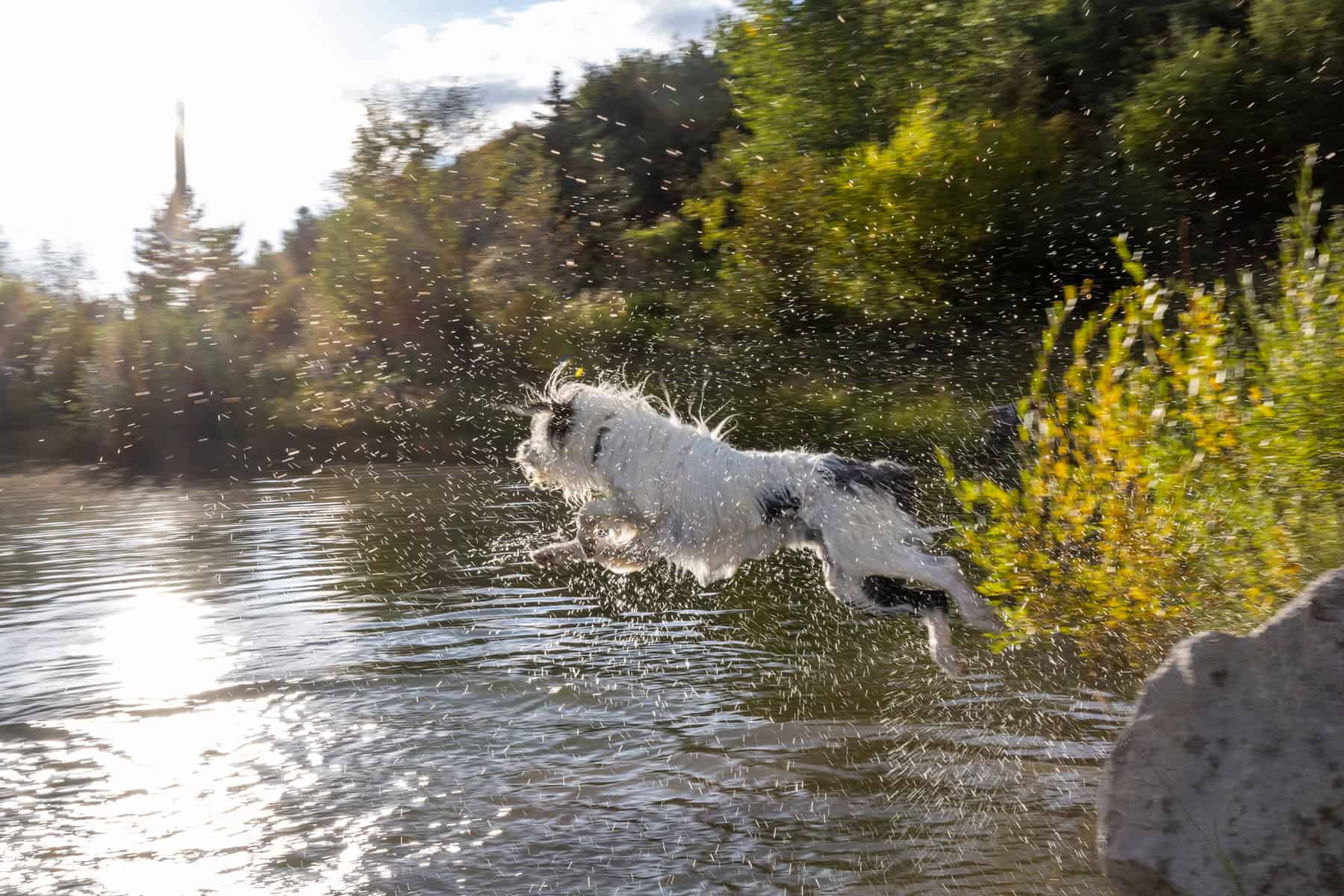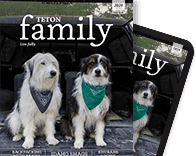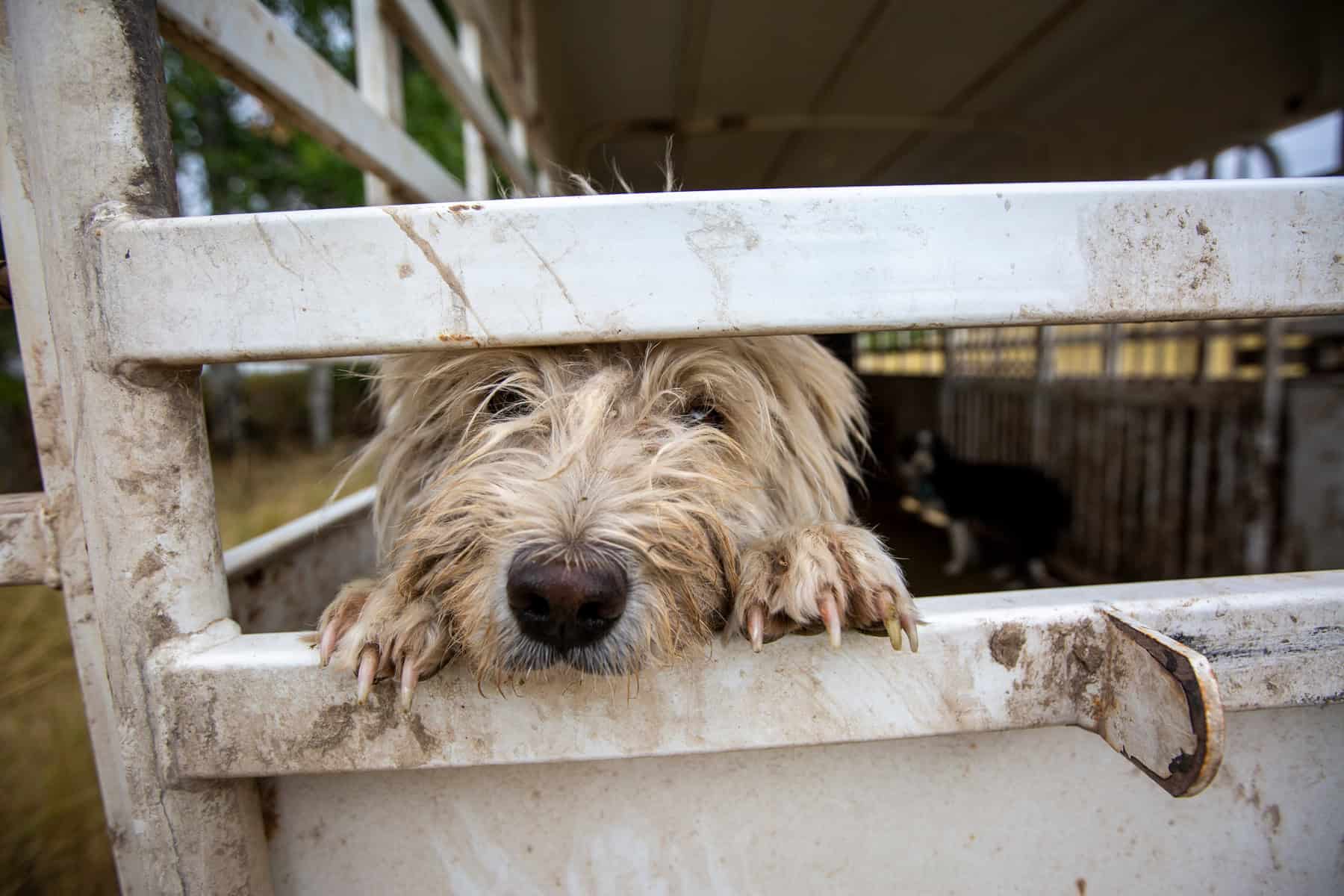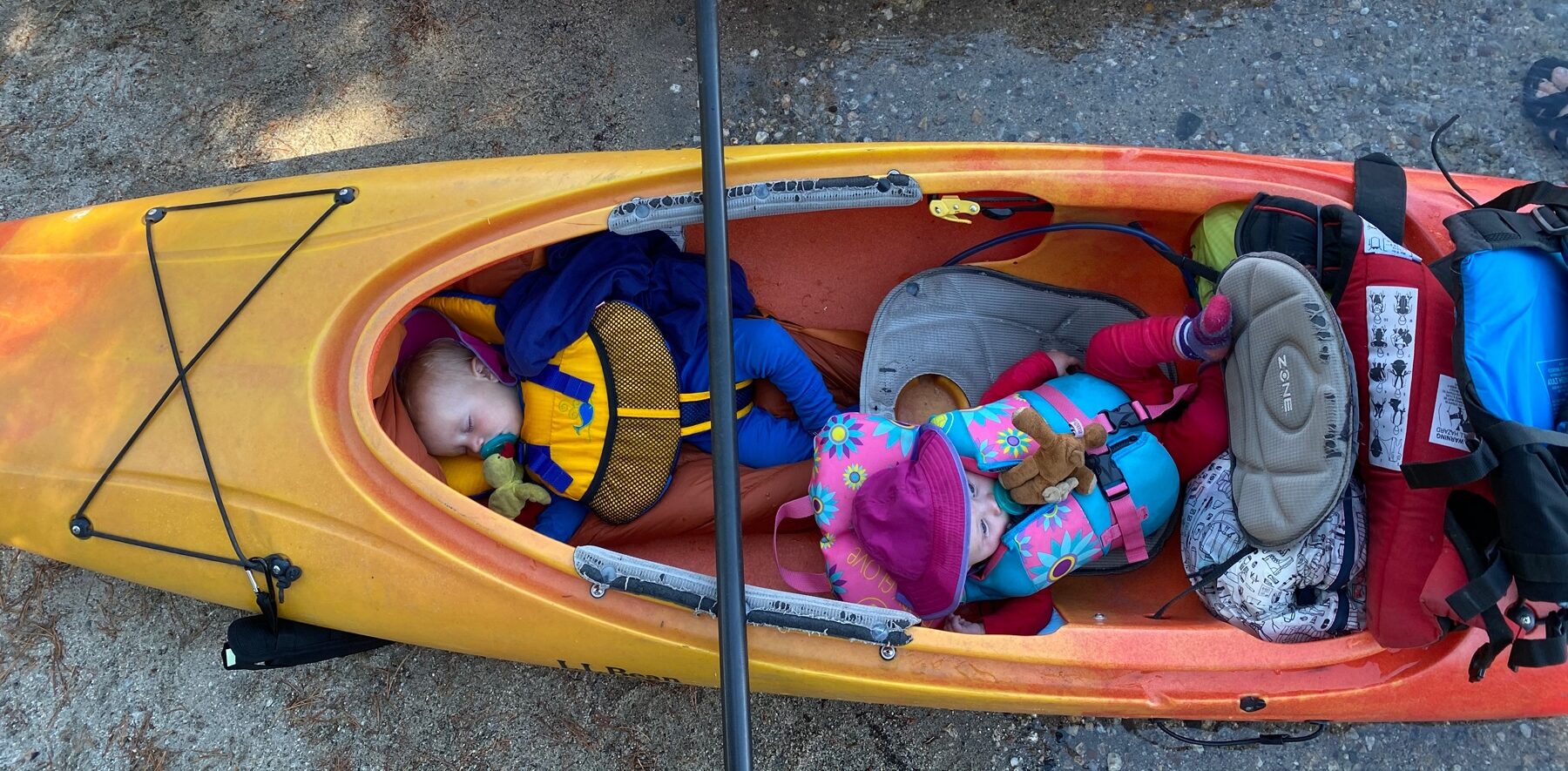By Christina Shepherd McGuire // Photography by Natalie Behring
—
It’s 6:30 a.m. Oreo and Bingo stand poised at my back door, ready to work. I open the door and give the command: “Go check the chickens.”
The dogs dart over to the chicken coop, located on my property’s perimeter bordering the forest, and start sniffing for evidence of foxes, long-tailed weasels, and raccoons. After a few inspection laps — and the occasional bark, noting the scent of a recent predator — the dogs bound back to the door, ready for breakfast.
Oreo was born in the back of a pickup truck on the late Rex Hansen’s ranch at Hatches Corner in Tetonia, Idaho. (Rex was the beloved former Teton Valley Idaho rodeo announcer.) A tricolor mix, she was one of a litter of eight that Rex’s working dog Dot birthed in June of 2014. And ever since Yellow Dog, our 14-year-old lab mix, passed, the kids had been begging for another dog.
We don’t own a ranch, and I had never owned a herding dog before. This dog seemed nervous compared to the typical Labrador mixes I was used to (and definitely a little more protective), but she quickly picked up on several commands and seemed eager to please. It became apparent that Oreo — named by the kids for her black, white, and brown layered fur — chose me as her person, sticking by my side except for when it was time for her to protect the free-ranging chickens and check the property’s perimeter for animals. She also knew it was time to relax when I sat down at my computer to work.
Years later we learned that Oreo’s mixed breed — Australian shepherd, border collie, and Airedale terrier — was no accident. The coined “Idaho shag dog” is coveted by regional cowboys, as the combination of the three breeds makes for a gritty dog with a ton of stamina that works cattle like none other.
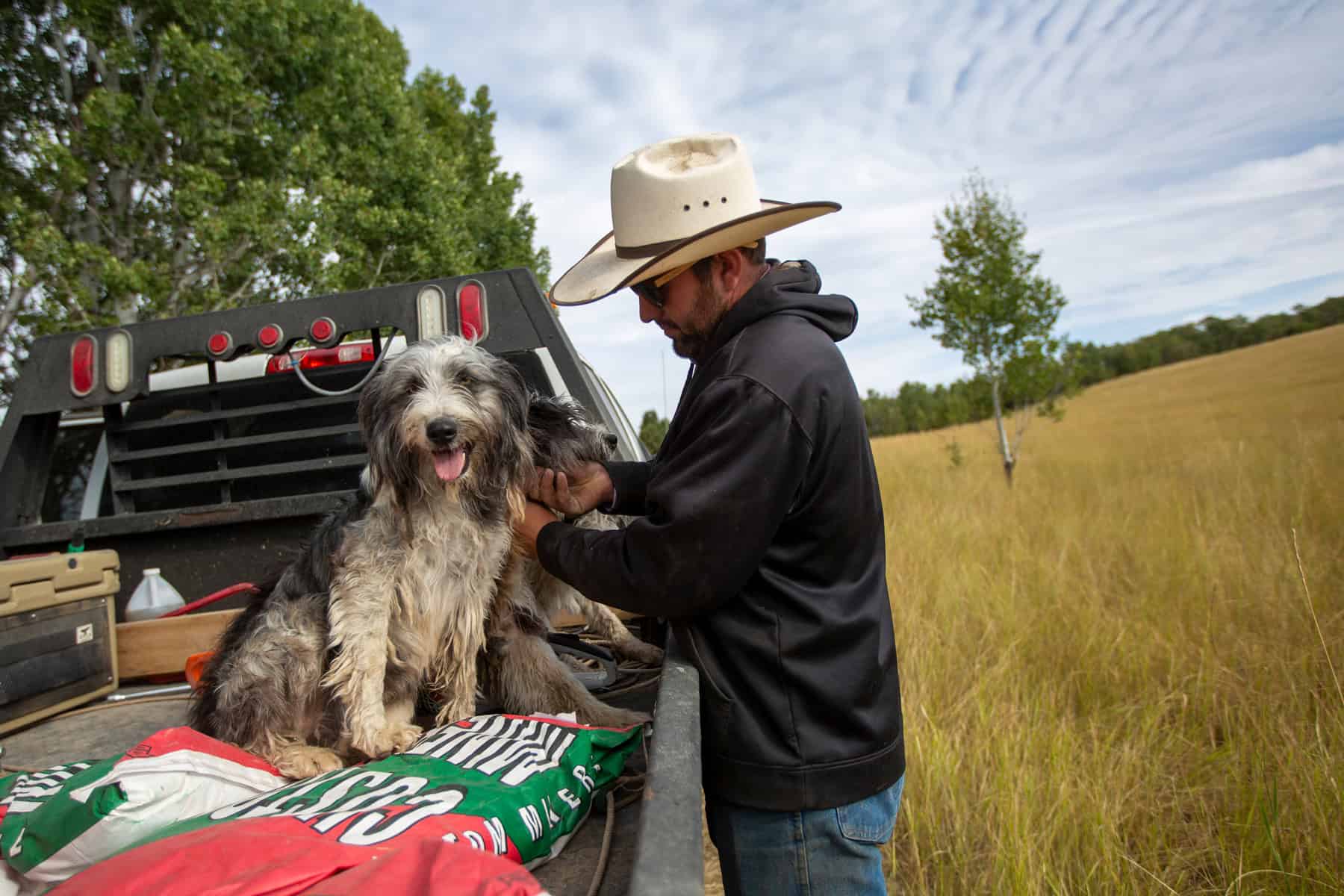
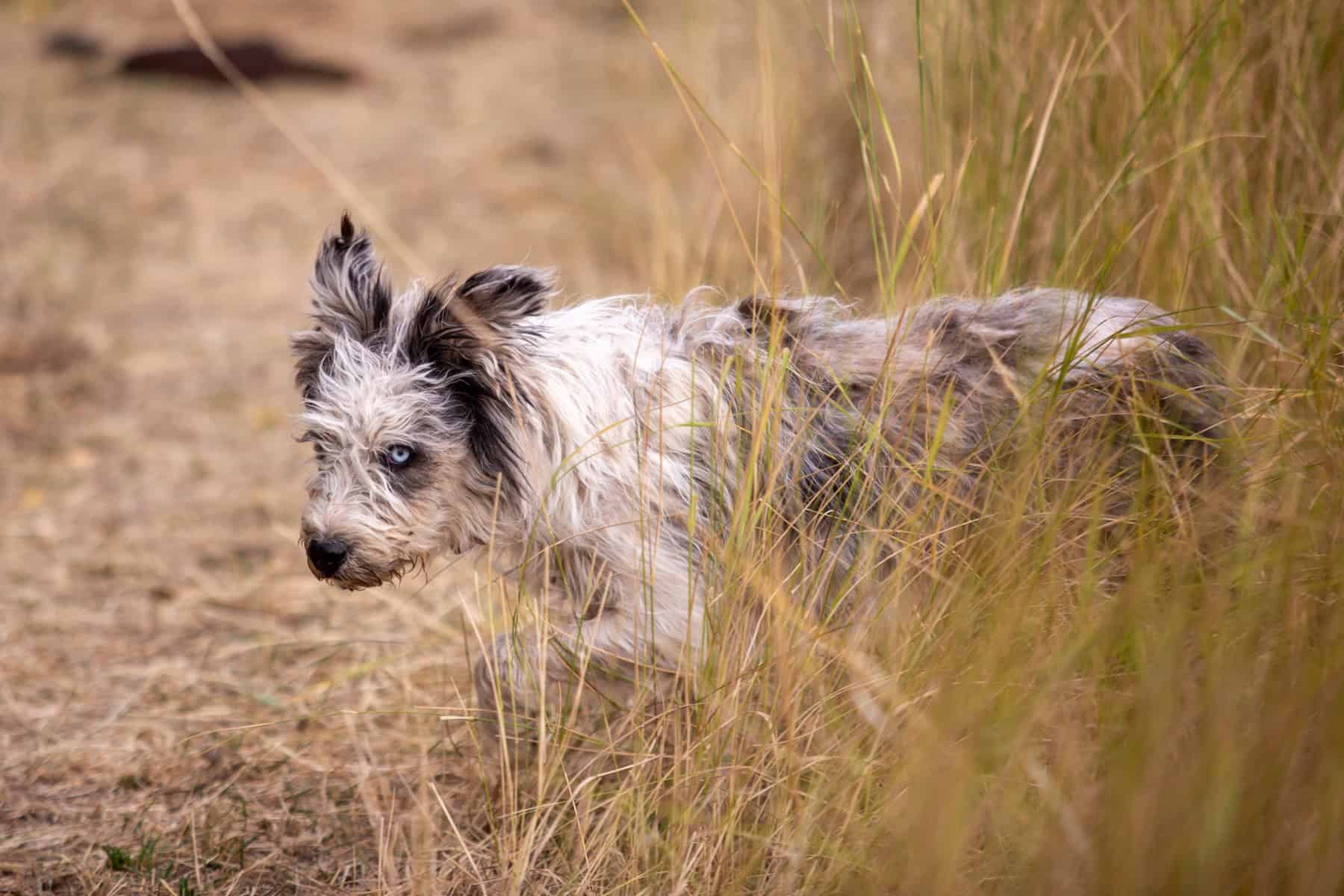
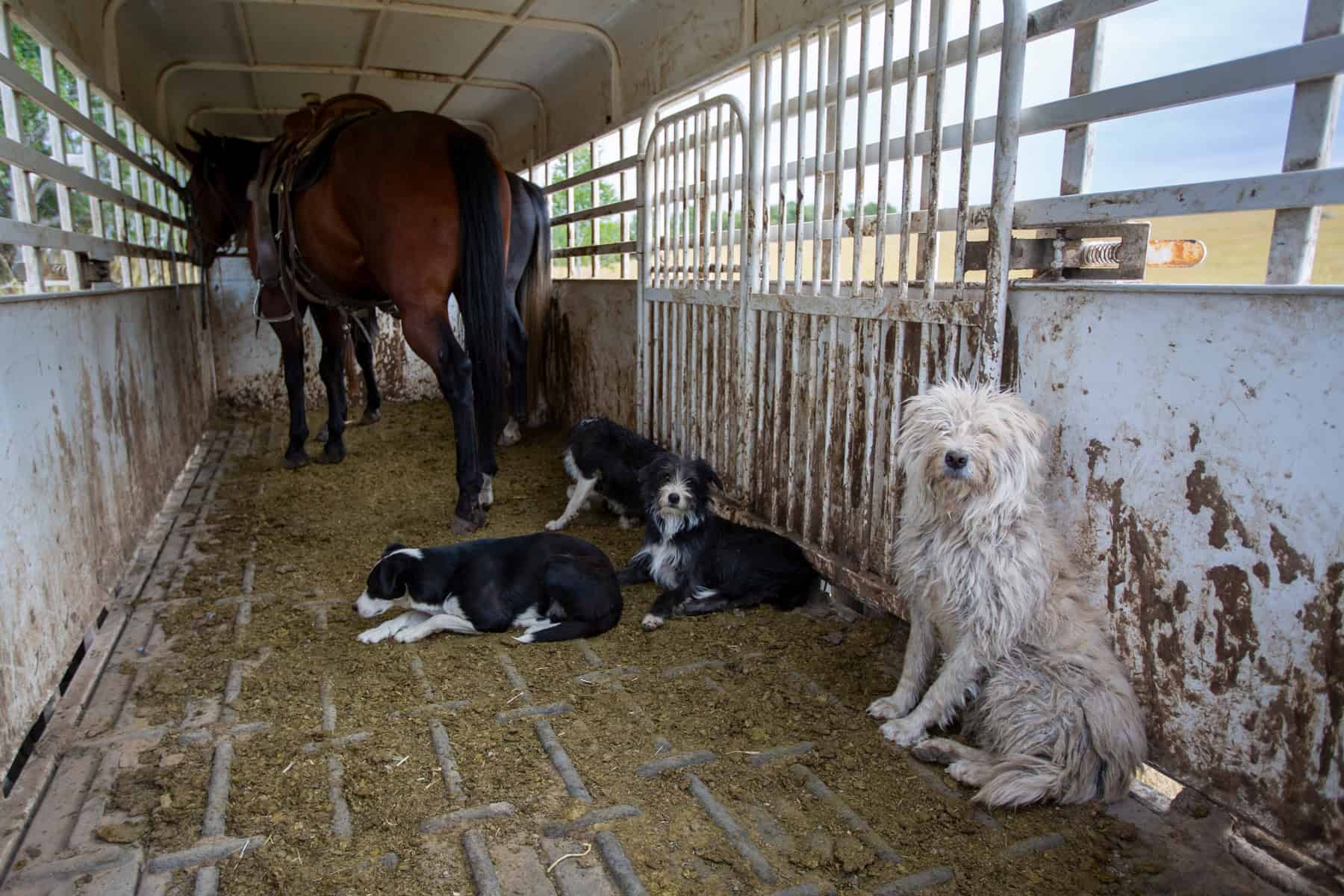
Tanner Fuchs takes his shags on a mission to tag calves near Ashton, Idaho.
A Mottled History
According to an article written by Dianna Troyer for the Idaho Senior Independent in 2018, “The Idaho Shag, or fuzzy dog, originated in the eastern side of the Panhandle State, although its exact origins are blurry …” Another blog post says the breed began in the Pahsimeroi Valley in the early 20th century “to help [ranchers] with daily tasks, such as herding livestock and guarding their property.” These dogs were originally called “Pahsimeroi Fuzzys” for their Muppet-like appearance.
Still, shag breeder Rick Ellis of Ellis Livestock and Double S Livestock in Howell, Utah, says families in the Dubois/Medicine Lodge region were the first ranchers to breed and use these curious creatures, and he sought them out when he heard rumors of this mixed breed.
“We were looking to make a change from border collies and Australian shepherds,” he says. “The Hogans and the Smalls [of Dubois] had shags on their family ranches … They were the most amazing dogs we had ever seen!
“Over the hill [in the Pahsimeroi Valley between the Lemhi and Lost River Mountain ranges], they will tell you that the ‘Pahsimeroi Fuzzys’ were the first shag dog. The Pahsimeroi people get kinda emotional about it, but no one else seems to care … There are also ‘Nevada Fuzzys,’” Ellis explains, noting the Pahsimeroi dogs are bred with Old English sheepdog, making them a little nicer, and not as tough, in his opinion.
The Idaho shag is not an AKC registered breed. Still, similar to the American quarter horse, a registered breed of horse that was once considered a mixed-breed, shags were thoughtfully developed for a certain task.
“It started out with some guys breeding a combination of dogs for the job at hand,” Ellis says.
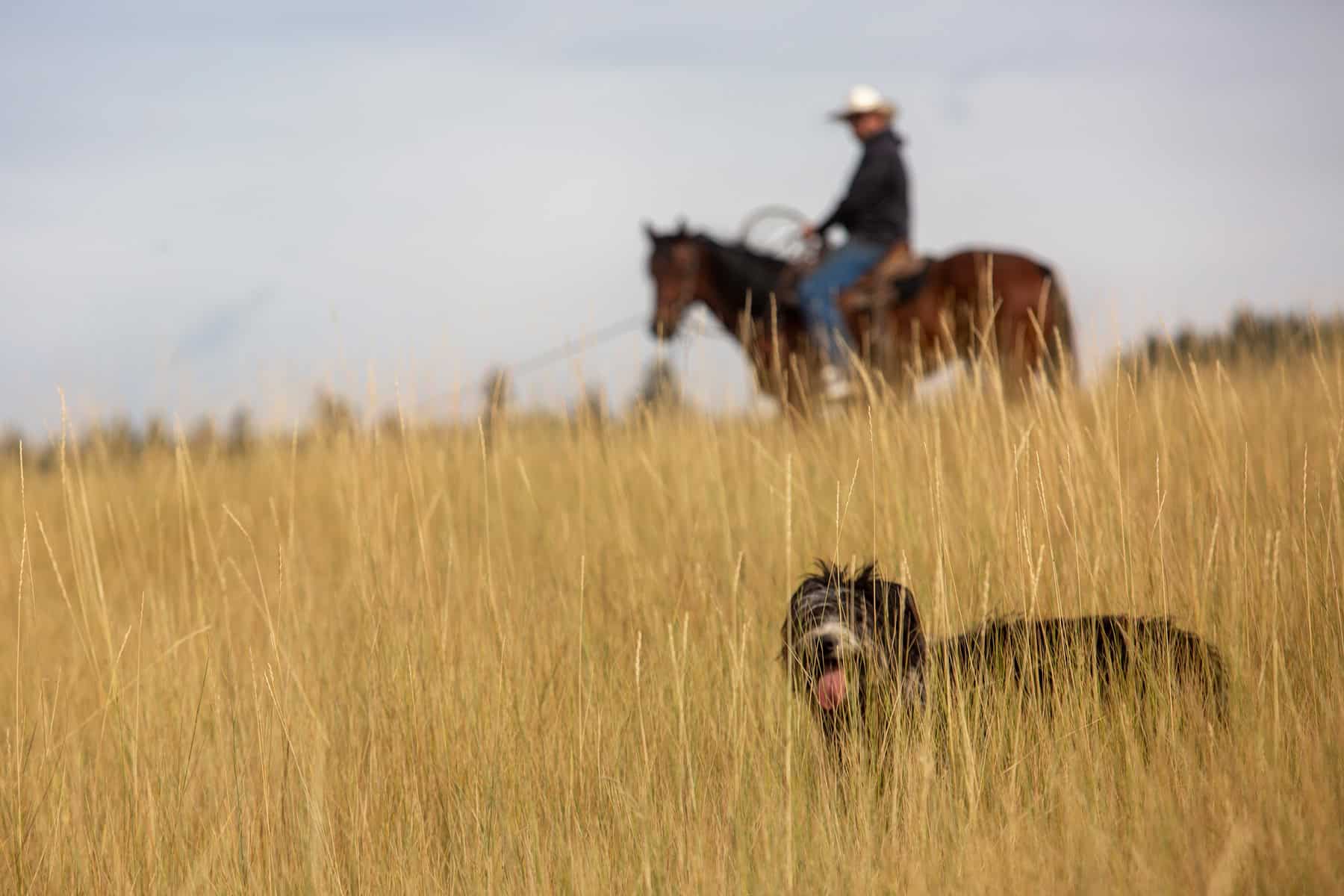
A Cowboy’s Dream
Ellis’ shags come in handy when he’s working his 1,400 head of cattle, which summer near Stone, Idaho, and winter south of Snowville, Utah. He’s been breeding Idaho shags for 25 years and appreciates that this mixed breed doesn’t come with the diseases and joint issues of pure-bred dogs.
While his dogs are primarily border collie, Australian shepherd, and Airedale terrier, he also works in a little Wheaton terrier and bull terrier. He says it’s the Airedale that gives the dogs their grit and hardheadedness, and it also makes them better family dogs. But it’s the Wheaton and bull terrier that make them tough, as he notes his past collies and shepherds grew lazy after a spell.
Ellis recognizes the uncompromised natural abilities of his dogs — they are very athletic.
“I have dogs that jump over the side of the pickup to get in when the tailgate’s up,” he says. “They have a lot of stamina. I may ride 20 to 25 miles in a day, and my dog is there [waiting] for more.”
One of Ellis’ young dogs, Tig, came from Molly, a shag famous for her lineage. A working day for Tig consists of loading up in the pickup and traveling into the desert to the BLM land where Ellis grazes cattle. The team rides a total of 23 miles to gather the herd to a place where they can sort them. At the end of the day, when Ellis’ wife shows up in her side-by-side, Tig won’t get in.
“He has a tremendous work ethic,” says Ellis. “He loves to ride.”
Four-year-old Rip is the half-shag, half-border collie of Alexie and Dustin Hulme of Arrow E Ranch in Tetonia. They breed Corriente cattle (a small cow with horns) for team roping, as Dustin is the “heeler” on a roping team. The family typically has 15 to 20 cattle on their ranch at a time and has always been a border collie family (they’ve owned six).
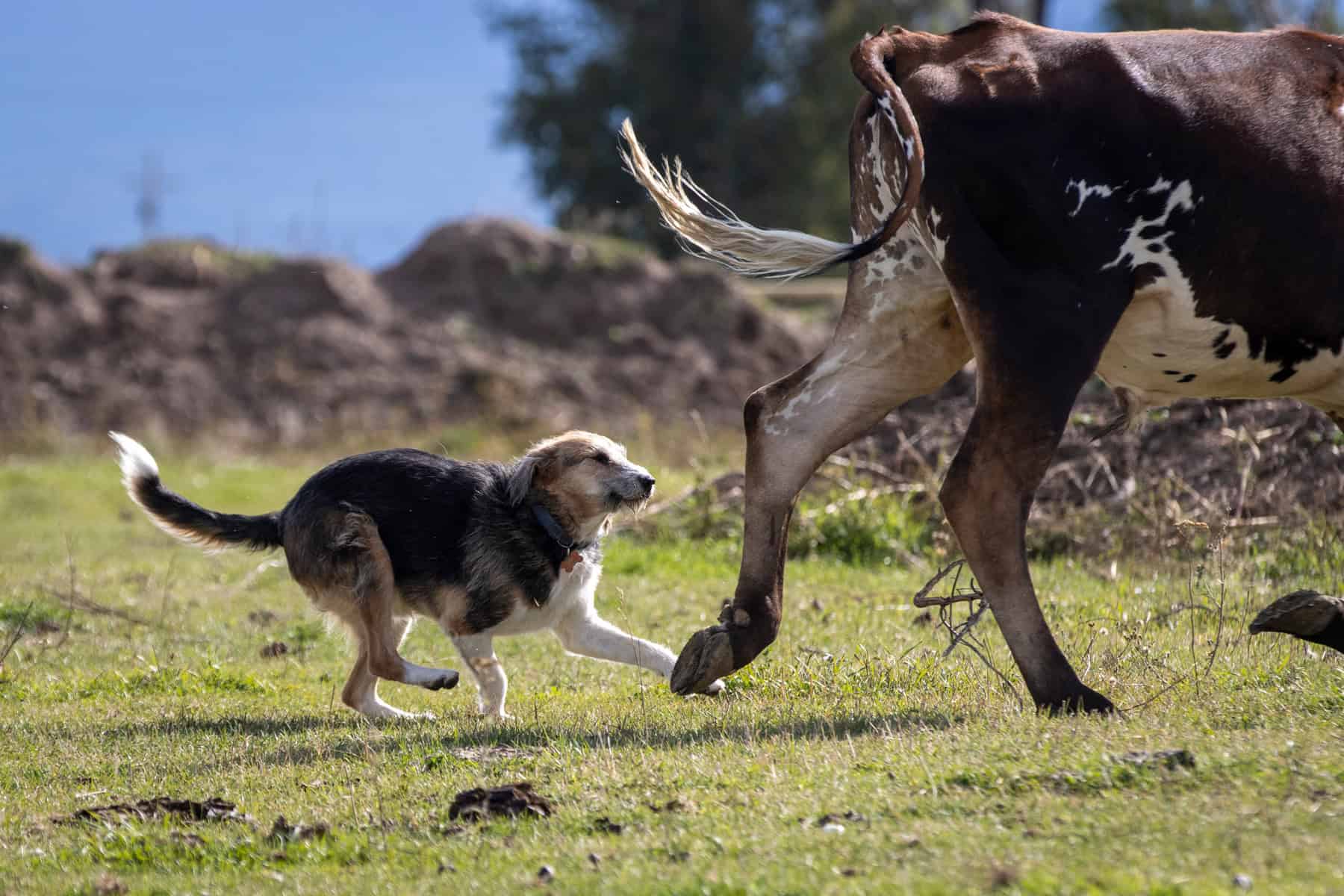
“Rip was kind of a COVID dog,” says Alexie. “We have friends who own a huge ranch with 500 head of cattle in Randolph, Utah. They use shag dogs, and say they are great cow dogs … When they had puppies, Rip just kinda fell into our lap.”
Rip and his sister Beth, a 3-year-old pure-bred border collie, start their summer days around 7:30 a.m. helping the Hulme’s kids, Adri (age 10) and Alaina (age 6), with their 4H animals. They go out to feed the pigs and turkeys, and then they play in the creek. Around 10 a.m., it’s time to round up the cows and herd them into the arena so they’re off grass and ready to rope that evening. When it’s time to get ready for the rodeo (Dustin competes in the Driggs, Rexburg, and Jackson rodeos), the dogs load the cows into the shoots to get their horns wrapped, and off they go. Once the day is done, around 7 or 8 p.m., the dogs help turn the cows out to pasture, and then go off to bed, which is usually inside the house, unless it’s spring or fall and they’re muddy.
Alexie says her dogs are quite different, despite the similarities in their breeds. Rip listens better than Beth, who’s all “go, go, go.” Alexie says Rip’s more eager to please, as well, whereas Beth is more strong-headed. And Beth always knows just what to do, whereas Rip waits and asks, looking at them like, “What do you want next?”
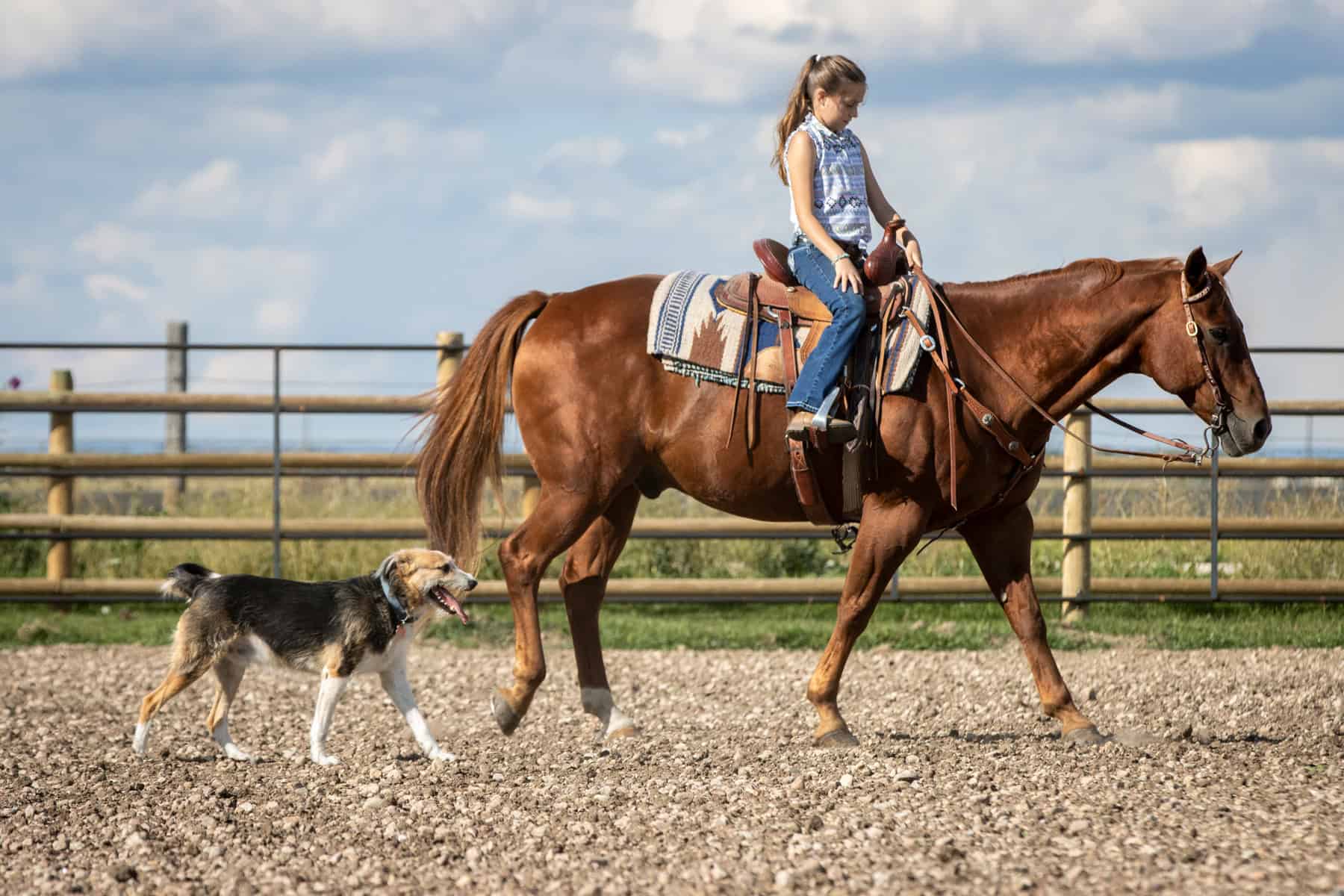
A Family’s Best Friend
“Shag dogs are the ‘funnest’ dogs you’ll ever want to be around,” says Ellis. “There could be six dogs laying on the hardwood floor in the kitchen with my wife, but once they’re outside, they are all about it [tending cattle].”
While he breeds dogs specifically for ranchers who want to work them, if he notices a pup seems timid, he gives it away as a pet.
“We have people come to us for a hiking buddy or a house pet,” he says. “I don’t let people pick pups until they are 6 to 8 weeks old. In fact, I usually pick them for them. I don’t want an aggressive dog going where he shouldn’t go. Typically, I have three pups out of a litter that are better suited for companion dogs.”
Patrick Solomon and Elizabeth King of Victor both worked on a ranch and were looking for a herding dog that could be easily trained by their older dog. The couple owns horses and Solomon works part-time, seasonally, as a cowboy, but, ultimately, they were looking for a pet. They learned about Idaho shags in a ranch classifieds ad, did a little more research, and realized this mixed breed would work great for their lifestyle.
They found Clover, now age 5, at a breeder in St. Anthony, Idaho, who, at the time, had 11 puppies — two litters from two different moms. Later, Solomon and King acquired Tiffany (now age 2), also a shag, after realizing how much they liked the mixed breed.
“Dogs that aren’t hardwired to pay attention to their person are challenging for me,” says Solomon. “With a herding dog, half the training is already done. It’s kind of innate.”
He goes on to say that while the dogs are super smart, there’s also a downside to having them around as pets — they get into trouble if they are bored. However, “they always want to be with their person, unless they have a job to do,” he says.
Solomon and King take their shags on lots of adventures. The dogs love skiing on Teton Pass, but Solomon notes that his dogs are not as efficient in the snow as their friend’s Lab mixes. “They tend to trench instead of bound.” So, the couple only skis with them when the conditions are right, and there’s a bottom for them to push off.
“We jokingly refer to it as ‘extreme dog walking,’” says Solomon.
Solomon shares Ellis’ sentiment about shags being fun — and sometimes even “funny.” He says when his dogs realize they are not coming along on an outing, they roll over and go limp “like none of the muscles in their bodies work.” Similarly, they tend to sleep on their backs with all four feet up in the air (something I’ve noticed my shags do, too).
And while some shags make great family dogs, Solomon notes the mixed breed is not for everyone.
“I put them in the same boat as a border collie,” he says. “People need to know there is a responsibility to work with them like they are a herding dog, because that’s how they view the world … It helps to be active.”
Alexie agrees, saying, “I think [shags] are great family dogs, but they need some space … They don’t necessarily need to work cattle, they just need the space to run around and get their yayas out.”
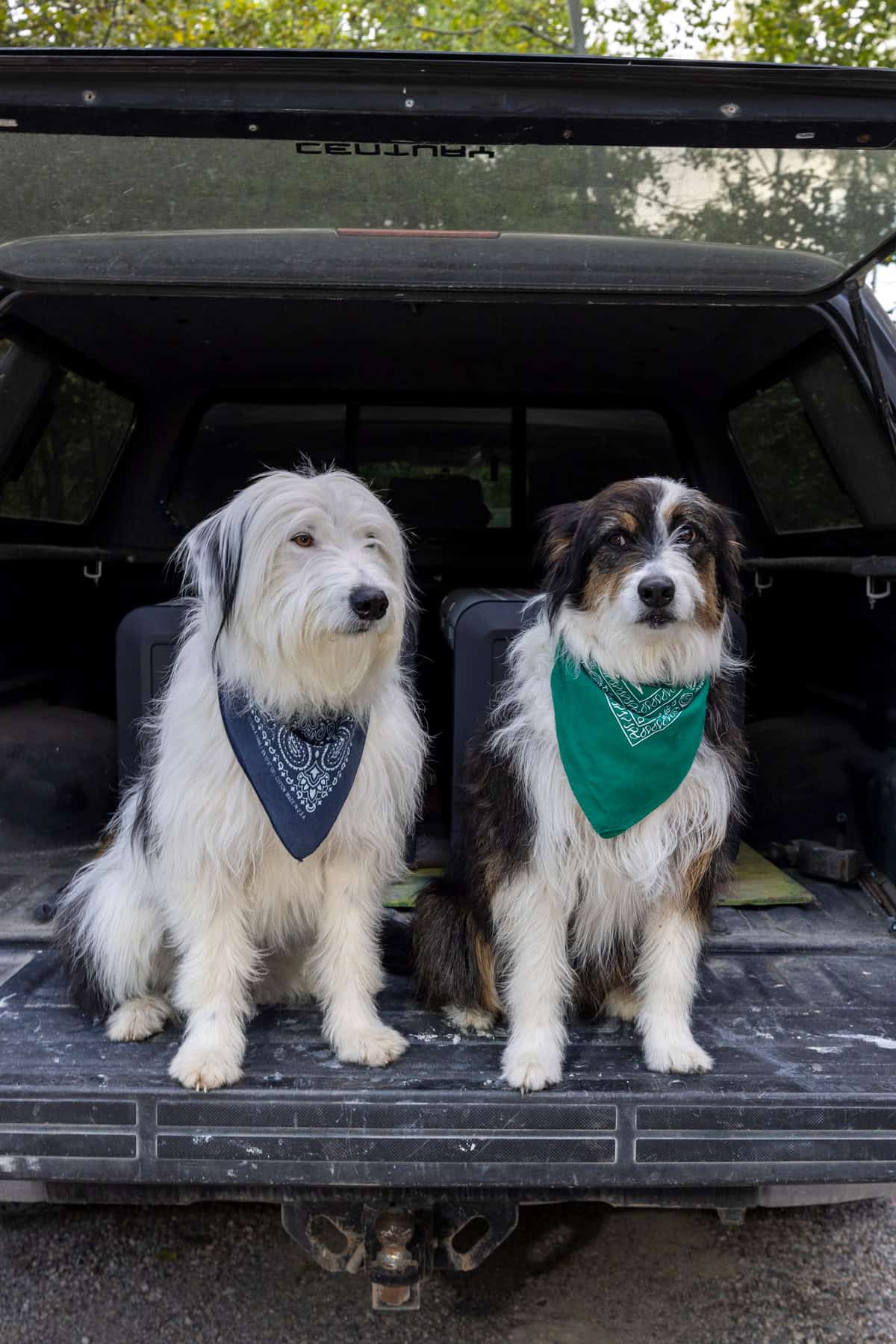
As for my family — once we realized that Oreo’s mix was actually a thing, we decided she needed a sibling. So, I joined the “Idaho Shag Facebook Group” looking for another puppy. I stumbled upon Bingo in a listing out of Tooele, Utah. He was the last one left in the litter because he was born with only three toes on one of his back paws, making him a bit clumsy and not suitable for a rancher. He was also a little dopey and not as frisky as the sought-after females in his litter. We knew it was meant to be when, coincidentally, a neighbor said he was headed to Salt Lake City to pick up a large piece of equipment for his cabinet shop and would be happy to meet the breeder for a pickup.
Since then, Oreo and Bingo have been spending their time clearing our property of predators, chasing ground squirrels, cross-country skiing with me in the winter, and swimming in the fire ponds on North Leigh Creek (in Tetonia) in the summer. As a freelance editor and writer, I work from home, so they are rarely alone for long stretches. Still, even with their high-strung herding gene, both dogs enjoy lounging at my feet for hours (even as I write this article).
We lovingly refer to Oreo as our “house kitten”; in her older age, she often prefers a place on the couch in lieu of the cold and snowy winters outdoors. Bingo, on the other hand, sits for hours outside, hypnotized by the snow in the winter, and the rustling aspen leaves in the summer — making sure the forest is perfectly as it needs to be. I often wonder how their lives would be different if they lived on a ranch and worked cattle. But I’m a firm believer that animals find their humans, rather than humans finding their animals.
